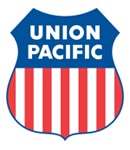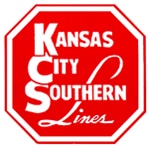 CSX Corporation announced Oct. 15 that they had net earnings of $463 million or $.046 per share for the third quarter of 2013. Earnings for the same quarter last year were $455 million or $.44 per share. Earnings are up by $8 million over last year, but down $72 million from the second quarter of this year.
CSX Corporation announced Oct. 15 that they had net earnings of $463 million or $.046 per share for the third quarter of 2013. Earnings for the same quarter last year were $455 million or $.44 per share. Earnings are up by $8 million over last year, but down $72 million from the second quarter of this year.
The railroad reported revenues of $3 billion for the third quarter that resulted from higher volumes and pricing gains in merchandise and intermodal. CSX reports an operating income of $854 million and an operating ratio of 71.5 percent.
“CSX now expects full-year 2013 earnings-per-share to be slightly up from 2012 levels. In addition, the company remains on target to achieve its goal of sustaining a high-60s operating ratio by 2015, while remaining focused on attaining a mid-60s operating ratio longer-term,” CSX said.
Operating ratio is a railroad’s operating expenses expressed as a percentage of operating revenue, and is considered by economists to be the basic measure of carrier profitability. The lower the operating ratio, the more efficient the railroad.
 Union Pacific reports best-ever quarterly results for the third quarter of 2013. The railroad reported a net income of $1.15 billion or $2.48 per diluted share for the third quarter. Last year’s figures for the same quarter were at $1 billion or $2.19 per diluted share.
Union Pacific reports best-ever quarterly results for the third quarter of 2013. The railroad reported a net income of $1.15 billion or $2.48 per diluted share for the third quarter. Last year’s figures for the same quarter were at $1 billion or $2.19 per diluted share.
Operating revenue for the railroad had a four percent increase to $5.6 billion over last year’s $5.3 billion. Union Pacific recorded an operating ratio of 64.8 percent, a best-ever quarterly record. Operating income totaled $1.96 billion, up 10 percent over last year for the same quarter.
“Union Pacific achieved all-time record financial results this quarter,” said Jack Koraleski, Union Pacific chief executive officer. “Despite the challenges of lower coal and grain volumes, in addition to disruptions caused by the Colorado flooding, we managed our network efficiently and continued to benefit from the strength of our diverse franchise. When combined with real core pricing and productivity gains, we more than offset flat volumes to generate a new, best-ever quarterly Operating Ratio of 64.8 percent.
“As we move through the fourth quarter, we continue to monitor the economic landscape. Supported by our diverse franchise, we remain agile and well positioned for economic recovery,” Koraleski added. “We’ll continue to focus on running a safe, efficient, and reliable network that generates greater value for both our customers and shareholders going forward.”

The railroad reports an operating income up 11 percent at $200 million and an operating ratio of 67.8 percent for the third quarter. Operating ratio improved over 2012 figures by 0.9 points.
Diluted earnings-per-share was up at $1.07 while KCS reported $0.82 for the same quarter last year. Adjusted diluted earnings-per-share showed an increase of 16 percent, coming in at $1.10 for the third quarter of 2013. Diluted earnings-per-share for the third quarter of 2012 were at $0.95.
“Looking ahead, we expect a strong end to the year benefited by growth in export grain shipments. We also look forward to long-term improvement in our operating ratio as we move forward with our plan to increase the percentage of equipment we own versus lease,” David L. Starling said, president and chief executive officer at KCS.

The railroad reports a one-time expense of C$19 million (C$0.05 per diluted share) resulting from an income tax adjustment. Excluding this expense, earnings per share (EPS) saw an increase of 13 percent to C$1.72 from 2012’s EPS of C$1.52.
Revenues saw an eight percent increase to a quarterly record of C$2,698 million, which was driven by a four percent increase in revenue ton-miles, and a three percent increase in car loadings.
Operating income for the railroad also increased 10 percent to C$1,084 million and operating ratio also saw an improvement of 0.8 of a point to 59.8 percent.
“CN’s agenda of Operational and Service Excellence delivered outstanding financial results for the quarter. All our key operating metrics improved, service levels remained solid and we reached new levels of safety in our train operations,” President and Chief Executive Officer Claude Mongeau said. “With continued focus on supply chain collaboration and solid execution, the CN team is determined to grow its business safely and efficiently at a pace faster than the overall economy and to meet its full-year 2013 financial outlook.”

The company reports adjusted earnings per share (EPS) of C$1.88, a growth of 45 percent over the third quarter of 2012. Total revenues saw an increase of six percent to C$1.5 billion, while operating expenses saw a decrease of six percent down to C$1 billion.
Chief Executive Officer E. Hunter Harrison said, “By all standards, this was an outstanding quarter. The company’s focus on service execution while controlling costs is a testament to our team of dedicated, hardworking railroaders. We enter the fourth quarter with momentum and are well positioned for what I believe will be a record 2013.”
Norfolk Southern publicized its third quarter net income of $482 million, a 20 percent increase over the third quarter of 2012 today. The same quarter last year only saw a net income of $402 million. Net income was also up $17 million over the second quarter of this year.
Diluted earnings per share were at $1.53, up 23 percent over last year’s $1.24. Operating revenues for the railway were at $2.8 billion, five percent higher than the same quarter of 2012. Shipment volumes saw an increase of four percent.
Income garnered from railway operations was $849 million, up 16 percent. Operating ratio improved by three percentage points to 6
9.9 percent.
CEO Wick Moorman said, “Norfolk Southern delivered strong results, led by growth in our chemicals, metals/construction, intermodal, and automotive businesses, combined with ongoing productivity improvements. Even in the face of continuing weakness in the coal markets, our focus on service efficiency and velocity allowed us to provide superior performance for our customers and excellent results for our shareholders.”
